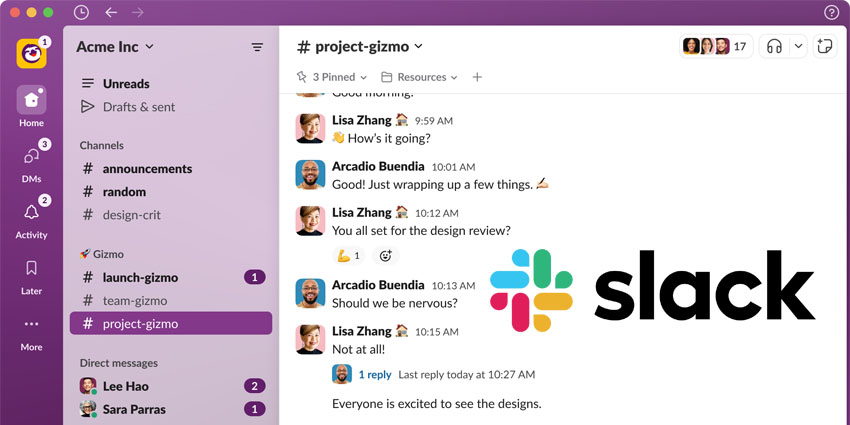Slack has launched its new redesign, with a refined UI and enhanced user experience to improve productivity.
Slack highlights that the new design will allow users to navigate channels and conversations to work faster and efficiently, focus on tasks better without distractions, and utilise new tools to simplify the workday.
Noah Weiss, Chief Product Officer at Slack, said:
We know millions of people start and end their workday in Slack, so we took great care to ensure these improvements make it a more productive and pleasant home. The new experience helps teams stay better organised, focus on what’s important and quickly access a growing set of tools in Slack.”
What Will the New Design Look Like Specifically?
Channels, direct messages and apps will still be viewable from a single page, now renamed “Home”, which has had colourful tweaking to make moving between channels and apps more accessible.
Slack is also introducing a valuable functionality for Slack Enterprise Grid users — the capability to view channels from every workspace, all in Home, removing the need to toggle between workspaces.
Slack is also introducing “dedicated views” to help users focus on distraction-free work, with a section called Activity that users can enter to get up to speed with workflows quickly. Users can set aside time to respond to their unread DMs in “Direct Messages” when they’re between meetings and can save messages or action items via the “Later” option, with the ability to set a reminder to ensure it’s completed on time.
Users can also click “More” to find productivity tools, from canvas to workflows to apps. The More functionality will differ depending on paid and free Slack subscriptions.
“Designed to give you more control over where you’re spending your time, these views support the different ways that you work in Slack,” Slack wrote in a blog post accompanying the announcement. “And with notifications housed deeper within these views, you can decide when you want to put your head down and work and when you’re ready to collaborate.”
The new “Create” button allows users to generate new messages, channels, huddles and canvases. Slack has also updated the search experience so users can click each result to understand the full context without jumping back and forth to find what they need.
Slack’s new user experience began rolling out to teams this week and will become available to all existing users over the coming months.
Slack and Salesforce’s AI Solutions
Last week, Salesforce launched Slack Sales Elevate, a personalised sales home that integrates Slack’s collaboration platform with Sales Cloud and maintains AI-powered features.
Slack Sales Elevate is built into the Slack platform, creating a hub that centralises information, streamlines processes, and automates admin tasks in the landscape where sales teams already collaborate with peers, partners, and customers. The solution is also enhanced by Salesforce data, boosting productivity and collaboration among sales teams.
Slack Sales Elevate is generally available now for customers of Slack Business+ plans and above, as well as Professional, Enterprise and Unlimited Sales Cloud versions. It is priced at $60 per user per month.
In May, Salesforce announced Slack GPT, a conversational AI tool to bolster business productivity.
The new technology utilised CRM and conversational data and added AI features into Slack, generative AI app integrations, and the functionality to leverage customer insights through the Customer 360 and Data Cloud. The arrival of Slack GPT followed the release of Salesforce’s Einstein GPT. However, Slack GPT provides more advanced agent-assist innovations within the Service Cloud application than Einstien GPT.
Slack GPT brought AI natively into the Slack user experience to help users be more productive. Specific features included AI-powered summaries of message threads that users may have missed — a time-efficient strategy to catch up without reading every comment. Slack GPT can attend huddles on a user’s behalf and generate a recap comprising the most important takeaways.
In other Slack news, last month, Pylon announced that it had raised a $3.2 million seed investment to maintain its data management software development for customer conversations in Slack.
As B2B conversations have transitioned from email to communication platforms like Slack, Microsoft Teams, and Discord, they have become more challenging to track. Pylon allows businesses to oversee these messages, with a Zendesk integration enabling the production of support tickets to be created when necessary.







